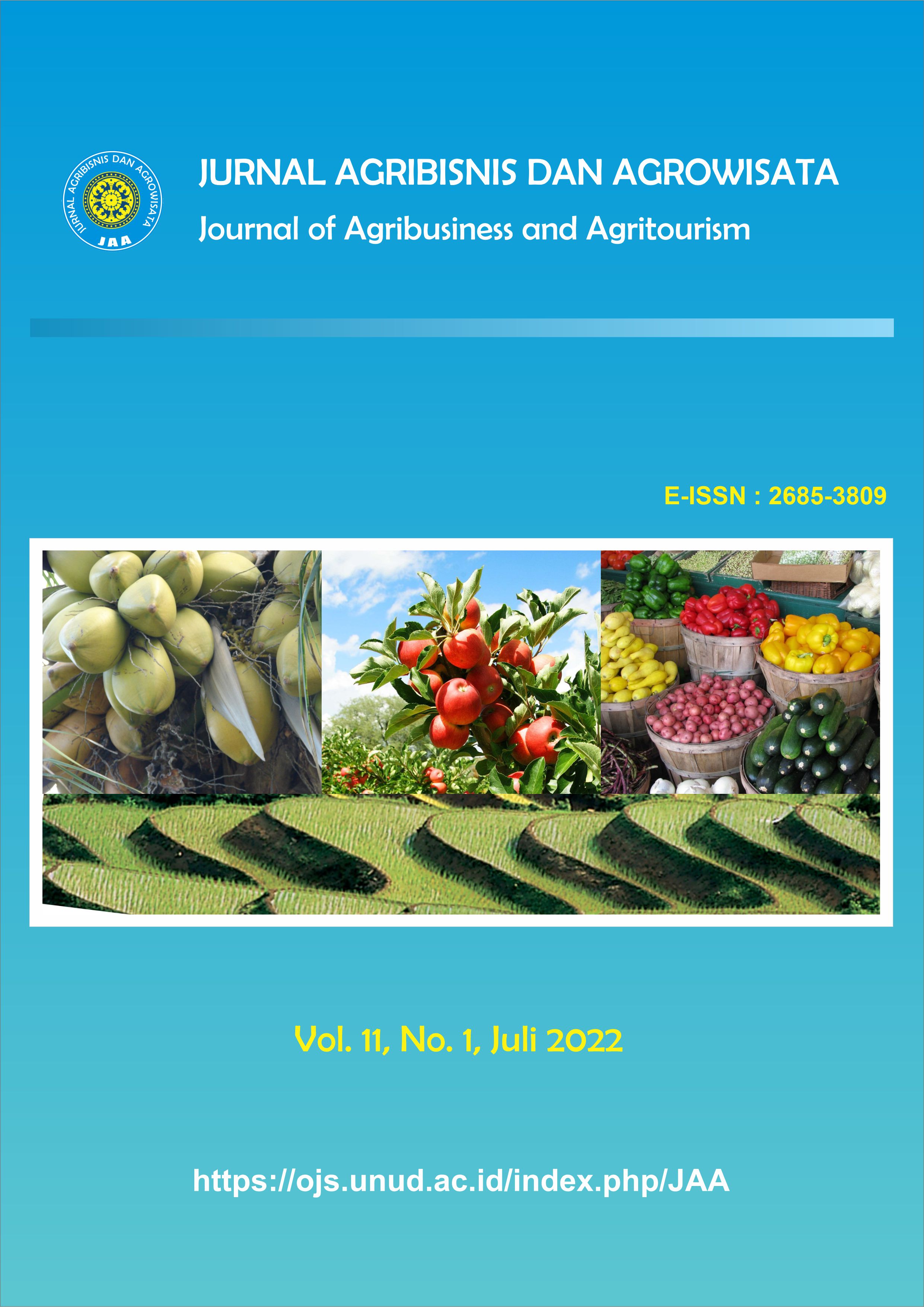Komoditas Unggulan pada Sektor Pertanian Tanaman Pangan di Kabupaten Sumba Barat Daya
Abstract
Leading Commodities in the Food Crop Agricultural Sector in Southwest Sumba Regency. Each region has its own potential because of its different characteristics, both in terms of land fertility, human resources and existing supporting infrastructure. This difference makes each region have their respective policies in managing their potential. Economic policy should be carried out by determining the superior base commodity and optimizing it. The agricultural sector of Southwest Sumba Regency is the sector that contributes the most to the regional economic growth. Therefore, analysis is needed to determine the base commodity in order to help regional economic growth. This study aims to determine the superior commodities in the food crop agricultural sector and the competitiveness of the leading commodities in Southwest Sumba Regency. The research method used is Location Quotient (LQ), Dynamic Location Quotient (DLQ) and Shift Share analysis using secondary data. The results of the LQ analysis show that only corn is the base commodity, meanwhile the results of the DLQ analysis show that the base commodities include rice, corn, soybeans, green beans, peanuts and cassava. Furthermore, the shift share analysis method shows the development of food crop commodities, namely corn commodity in the category of rapid growth; rice and soybeans in developing categories; peanuts in the category likely to be potential; cassava, sweet potato, and green beans are in the underdeveloped category. The commodity that is suggested to be a priority to be developed in Southwest Sumba Regency is corn commodity. Meanwhile, commodities that are not yet a basis need further attention.
Downloads
References
Arsyad, Lincoln.1999. Pengantar Perencanaan dan Pembangunan Ekonomi Daerah. Yogyakarta: BPFE.
Badan Pusat Statistik Provinsi NTT. Statisitik Pertanian Kabupaten Sumba Barat Daya 2018. Dipublikasikan Oleh Badan Pusat Statistik Kabupaten Sumba Barat Daya
Badan Pusat Statistik Provinsi NTT. Statisitik Pertanian Provinsi Nusa Tenggara Timur 2019. Dipulikasikan Oleh Badan Pusat Statistik Provinsi Nusa Tenggara Timur
Darwanto, H. 2002. Prinsip Dasar Pembangunan Ekonomi Daerah. Online). Tersedia.
Kuncoro, M., 2004, Otonomi dan Pembangunan Daerah Reformasi, Perencanaan, Strategi, dan Peluang, Penerbit Erlangga, Jakarta.
Suyatno, 2000.Analisa Economic Base Terhadap Pertumbuhan Ekonomi Daerah Tingkat II Wonogiri: Menghadapi Implikasi UU No. 22/1999 dan UU No. 25/1999. Jurnal Ekonomi Pembangunan Vol. 1. No. 2, 144 -159 Surakarta:UMS
Sukirno, S. 1994. Pengantar Teori Ekonomi Makro. Penerbit Raja Grafindo, Jakarta.
Tarigan, A. 2009. Kerjasama Antar Daerah (KAD) untuk Peningkatan Penyelenggaraan Pelayanan Publik dan Daya Saing Wilayah. Bulletin Online Tata Ruang Maret 2009 Badan Perencanaan dan Pembangunan Nasional.
Tarigan, R. 2005. Perencanaan pembangunan wilayah. PT. Bumi Aksara.
Mangilaleng, E. J., Rotinsulu, D., & Rompas, W. 2015. Analisis Sektor Unggulan Kabupaten Minahasa Selatan. Jurnal Berkala Ilmiah Efisiensi, 15(4).







